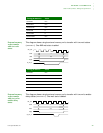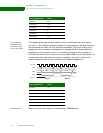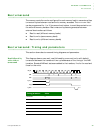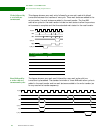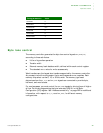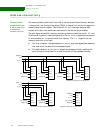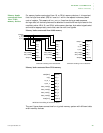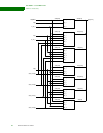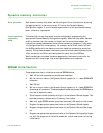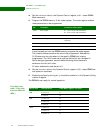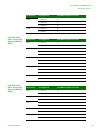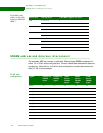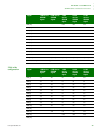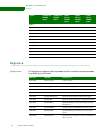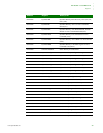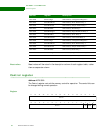
. . . . .
MEMORY CONTROLLER
Dynamic memory controller
www.digiembedded.com 225
. . . . . . . . . . . . . . . . . . . . . . . . . . . . . . . . . . . . . . . . . . . . . . . . . . . . . . . . . . . . . . . . . . . . . . . . . . . . . . . . . .
Dynamic memory controller
Write protection Each dynamic memory chip select can be configured for write-protection by setting
the appropriate bit in the write protect (P) field on the Dynamic Memory
Configuration register. If a write access is performed to a write-protected memory
bank, a bus error is generated.
Access sequencing
and memory
width
The data width of each chip select must be configured by programming the
appropriate Dynamic Memory Configuration register. When the chip select data bus
width is narrower than the transfer initiated from the current bus master, the
internal bus transfer takes several external bus transfers to complete. If chip select
4 is configured as 16-bit wide memory, for example, and a 32-bit read is initiated,
the AHB bus stalls while the memory controller reads two consecutive words from
memory. During these accesses, the memory controller block demultiplexes the two
16-bit words into one 32-bit word and places the result onto the AHB bus.
Word transfers are the widest transfers supported by the memory controller. Any
access tried with a size larger than a word generates an error response.
. . . . . . . . . . . . . . . . . . . . . . . . . . . . . . . . . . . . . . . . . . . . . . . . . . . . . . . . . . . . . . . . . . . . . . . . . . . . . . . . . .
SDRAM Initialization
These steps show how to initialize an external SDRAM device:
1 Wait 100 ms after powerup and clocks have stabilized.
2 Set the SDRAMInit value in the Dynamic Control register to 11 — Issue SDRAM NOP
command.
3 Wait 200 ms.
4 Set the SDRAMInit value in the Dynamic Control register to 10 — Issue SDRAM PALL
(precharge all) command. This precharges all banks and places the SDRAM device
into the all banks idle state.
5 Force frequent refresh cycles by writing a 1 to the Dynamic Refresh register. This
provides a memory refresh every 16 memory clock cycles.
6 Wait until eight SDRAM refresh cycles have occurred (128 memory clock cycles).
7 Program the appropriate operational value to the Dynamic Refresh register.
8 Program the appropriate operational value to the Dynamic Ras and Cas N regis-
ter.
9 Program the appropriate operational value to the Dynamic Configuration N regis-
ter, with the exception of the buffer enable bit, which must be set to 0 during
initialization.



